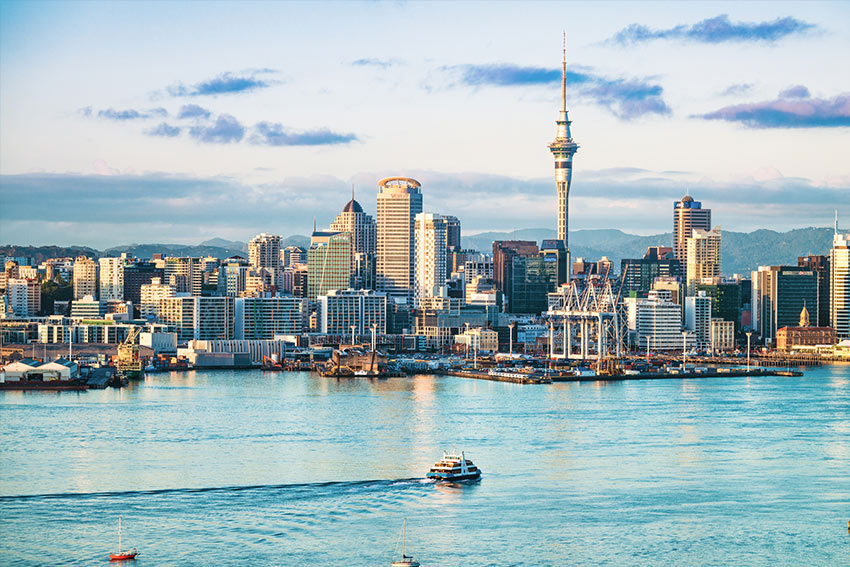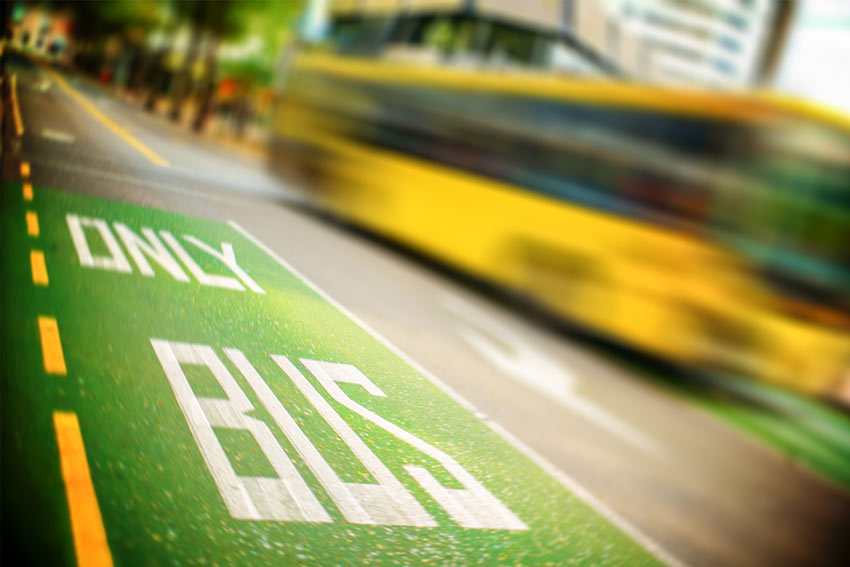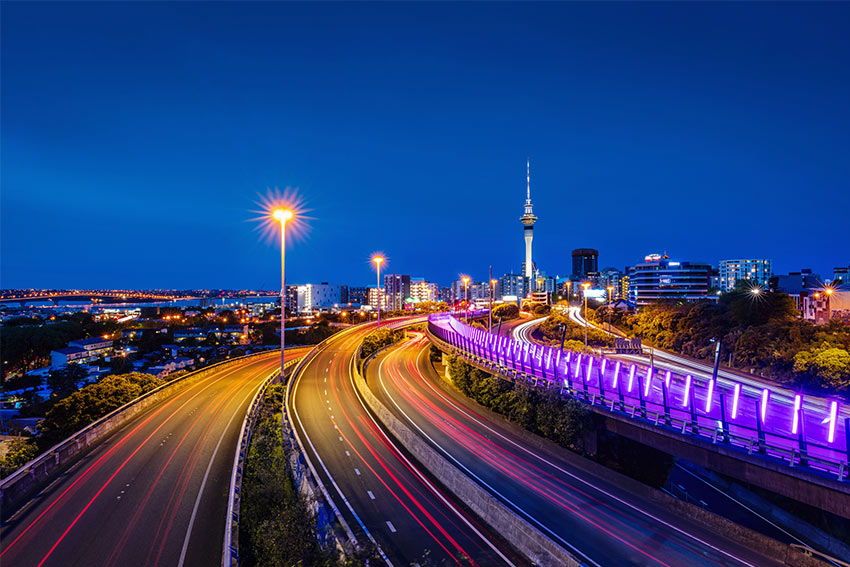A guide to getting around Auckland for out-of-towners
If you aren’t too familiar with the streets of New Zealand’s largest city, they can appear a little daunting. With so many transport options, it can be tricky to figure out how to get from A to B. If your child is planning to move to Auckland to study, it’ll help if they’re up to speed on how to get about.
Here’s our guide to getting around in Auckland, so you can spend less time figuring out AT HOP cards and more time exploring.
Getting around in Auckland

As New Zealand’s largest city, Auckland is well connected with a multitude of transport options.
Auckland airport is situated approximately 30 km south of downtown Auckland and there are several options to travel from the domestic terminal into the city. The SkyDrive Airport Express shuttle runs a direct service throughout the day, every day between the domestic and international terminals and the city. Tickets can be purchased online or from the coach driver. Alternatively, you can take a taxi or use a ride sharing app like Uber, YourRide or Ola to get into town.
If you live somewhere in New Zealand that isn’t close to an airport, InterCity buses could be an option. Alternatively, make a road trip out of your visit to Auckland.
Owning a car in Auckland
There are so many incredible places to explore within a short drive of the Auckland CBD, but you often need a car to reach them. It’s not necessary, but a lot of Aucklanders will tell you it’s hard to live in the city without your own wheels. If you own more than one car, consider lending one to your child or selling it to them. If they want to buy their own, make sure they’re aware of what’s involved.
Buying a used car - Buying a car in Auckland is relatively straightforward and if your child isn’t too fussed about a few little quirks they should be able to find a relatively good deal. TradeMe and Facebook groups regularly advertise used cars for sale by car dealerships and private sellers. If you get the chance, go with your child when they inspect a vehicle to help ensure they don’t get sold a lemon and do a car history check before purchasing.
Weigh up the costs - Buying a car in Auckland might not be too expensive, but the costs of owning it will add up over time. Make sure your teen budgets for petrol, rego, WoF inspections, insurance and ongoing repairs.
Parking - There is parking available in the city, however a lot of it is pay and display. Your child will probably find it far more economical to leave the car at home and bus, train or walk to class every day.
Taking public transport in Auckland
Aucklanders love to complain about public transport almost as much as they whinge about the weather, but in reality the system isn’t all that bad. If your child is living in the inner city close to the university, they shouldn’t have any issues finding fast, efficient transport options.
Britomart is the main public transport hub, however the city is currently undergoing a major transport upgrade that will see new train stations constructed at Mt Eden Rd/New North Rd, Karangahape Rd and Albert St. For now, though, Britomart is where you'll go to catch the ferry, the train and many of the buses connecting the CBD with inner and outer suburbs.
AT HOP cards
The first thing you and your child should do is purchase and load money onto an AT HOP card, a reusable prepay smart card Aucklanders use for travel on trains, ferries and buses around Auckland. The card itself costs $5 and can be bought online, at the Britomart customer service centre or an AT HOP retailer. Users can manually load money onto the card or set up an auto top-up whereby the balance tops up every time it dips below a certain amount of money. Simply tap on and tap off when you get on and off public transport.
Students receive discounted fares on Auckland’s public transport. You can find out more about how to access the student concession on the Auckland Transport website.
Auckland buses

Regular bus services connect the Auckland CBD with surrounding suburbs.
There are several regular bus services that connect the CBD and inner city suburbs. Departing regularly between 6am and midnight, they’re a quick and convenient way to get around the city:
- The CityLink (red) bus transports you around the city centre, running from the Wynyard Quarter through Britomart and up Queen Street to Karangahape Road.
- OuterLink (yellow) bus connects the inner suburbs of Parnell, Newmarket, Epsom, Balmoral, Mt Eden, St Lukes, Mt Albert, Point Chevalier, Westmere and Herne Bay.
- InnerLink (green) bus connects the inner city suburbs of Newmarket, Parnell and Ponsonby.
- TāmakiLink (blue) buses from the CBD to Glen Innes connect the city with the eastern beach suburbs of Mission Bay, Kohimarama and St Heliers.
- The Northern Busway service connects the city with the North Shore.
Other bus routes will take you further afield. Taking the bus cuts down on travel time, with dedicated bus lanes avoiding the worst of Auckland city traffic. It also makes it possible to live a little further afield if your isn’t too keen on staying in the middle of the CBD.
You can find Auckland bus timetables online or download the Auckland Transport smartphone app to check live timetables, routes and bus stops.
Auckland trains
Auckland has over 30 train stations spread over four lines. Trains offer an alternative to buses when you need to travel slightly longer distances, or if the train station is more conveniently located than the nearest bus stop. To check timetables and fares, download the Auckland Transport smartphone app or use their online journey planner.
Auckland ferries

Taking the ferry across the Waitemata Harbour is more than a commute; it’s an iconic experience.
Taking the ferry is less of a commute and more of an experience. Soaking up the views of the Auckland city skyline, Rangitoto and the Harbour Bridge are truly special, particularly on a good day. The ferry is a great way to travel on the weekends when you have more time on your hands and want to see the city from a different perspective.
Fullers360 and SeaLink are the two main ferry companies, however there are some smaller operators offering services to less popular destinations.
Rideshare platforms
There are a few ride sharing services operating in New Zealand to choose from. Uber is the main player, however NZ company YourRide are giving this tech giant a run for its money. The smaller companies generally offer cheaper rates, too.
Cycling

The Lightpath is a popular cyclepath in Auckland City. Alt text: More infrastructure is being built in Auckland to cater to cyclists.
Cycling is starting to take off in Auckland as more infrastructure gets constructed to cater to cyclists. It’s a healthy, economical and environmentally-friendly way to get around. Our favourite cycling routes include the very instagrammable Lightpath and the always scenic Tāmaki Drive. Other great cycling spots include Cornwall Park and the Viaduct.
Walking
Don’t forget about using your own two feet. Auckland is quite a spread out city, but a lot of the central attractions are easily walkable if you’ve got comfortable shoes.
Scooters
Scooters are a great way to get around and are very popular with students (as well as business people!) However, if your child wants to use a scooter to get around they’ll need to be mindful of safety regulations and keep an eye out for others on the roads and footpaths.
There you have it – a complete rundown of all the transport options that will help you get around our beautiful city. The AUT City Campus is situated right in the city centre, so it’s easy to reach no matter where you are. We also offer shuttle buses to take you between our City Campus, South Campus and North Campus.
Want more helpful advice?
Get regular emails with useful information for parents and whānau.